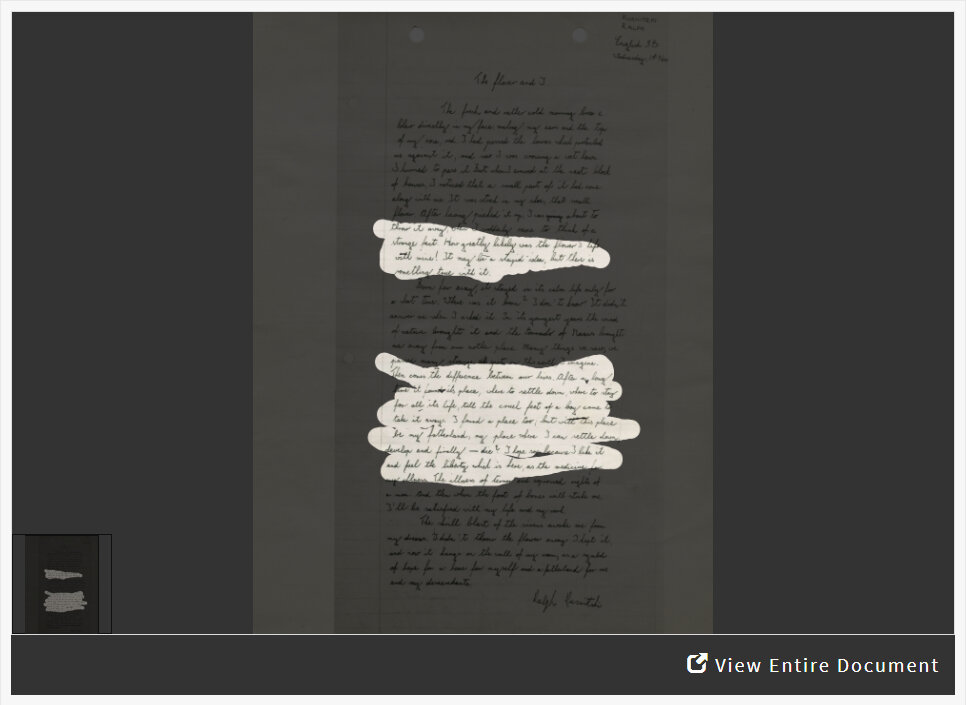In this activity, students will analyze a composition by Ralph Kuznitzki, a 15-year-old refugee living in the United States during World War II. He describes his experience coming to America to seek freedom, only to be housed at the Ft. Ontario refugee camp, a former Army base near Oswego, NY, with no possibility of permanent settlement in the United States.
A number of children and teens were among the refugees housed at Ft. Ontario, and 23 children were born in the camp before it was closed in 1946. The children attended school in nearby Oswego. Ralph Kuznitzki attended high school in town, and he wrote his composition “The Flower and I” for an English class.
Suggested Teaching Instructions
This activity may be presented as part of a unit on World War II, or America and the Holocaust. It was designed to be completed in pairs or small groups with a whole-class discussion, but can be adapted for individual work. For grades 7-12. Approximate time needed is 20 minutes. The activity can also be used in conjunction with activities
The Impact of the Immigration Act of 1924 and
U.S. Policy and the Holocaust Refugee Crisis.
Begin the activity in a full-class setting. Review with students some of the key events during World War II. Next, ask students what they know about the plight of refugees trying to immigrate to the United States during and after the war.
Students may be familiar with the predicament European refugees faced while trying to come to America during World War II. Immigration quotas and administration concerns drastically limited the number of refugees who could enter the country. Thousands remained on the waiting list for visas while the Nazi regime and their allies tightened the noose around Europe’s Jews, Communists, Roma and other "undesirable" populations.
After the class discussion, open the activity and show students the composition. Highlighted text will guide them. Ask students where the date falls in relation to the events of the war that they brainstormed earlier.
Divide the class into groups. Direct each group to discuss the following questions provided in the activity below the composition:
- Identify the five most powerful words in the composition. How do the word choices contribute to the tone of the composition?
- What are the author's emotions?
- What can you speculate about what his current life is like?
- What event is the author reflecting on?
- What are his dreams for the future?
- Do you think the author intended this to be read by others? If not, how might he have written it differently?
Ask the groups to share their responses during a class discussion. Then direct students to the "When You're Done" section to write one or two paragraphs answering the following:
- What did you learn about the experience of a teenage refugee during World War II?
- How did he feel to be in the United States?
- What were his feelings like for his home country, despite the "tornado" that brought him to America?
- What is your reaction to his composition?
Invite students to share their responses during a follow-up class discussion. Students may be interested in the following extended background information:
In 1944, the Roosevelt administration established the War Refugee Board. In
Executive Order 9417, F.D.R. outlined the goals of the Board: to develop plans for “the rescue, transportation, maintenance and relief...and the establishment of havens of temporary refuge for such victims.” However, this did not open the door to the United States for refugees, but rather charged the Board to work with European allies to provide safe haven in Europe.
After much discussion among the leaders of the Executive Branch in cooperation with President Roosevelt, a temporary refugee camp was established in the former Ft. Ontario army base near Oswego, NY. The Emergency Refugee Shelter housed 982 refugees, mostly Jewish and from Yugoslavia, Germany/Austria, Poland, and Czechoslovakia. The refugees signed a
statement that after the war they would return to their home countries.
Students may be surprised to learn that a young woman served a key role in identifying refugees to bring to the United States. Ruth Gruber worked for the Department of Interior as a special assistant to Secretary Harold Ickes. “Mother Ruth” escorted the men, women and children to the United States and helped settle them in the camp. She visited them regularly, and they “hailed her as they would a long-lost, close friend and relative” (see a
letter from Congressman Lowell Stockman to Ickes). In 2011, U.S. Representative Carolyn Maloney of New York presented a tribute to Ruth Gruber in the House of Representatives describing her as “an indefatigable journalist, activist and humanitarian.”
This activity was created by National Archives volunteer Cynthia Peterman.




